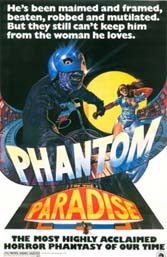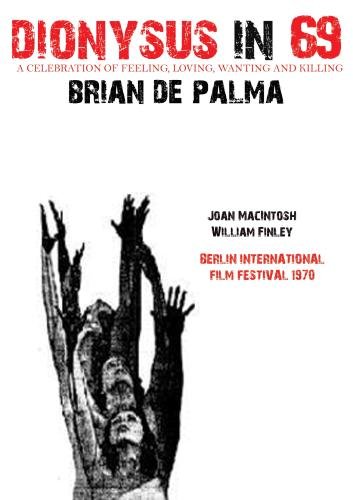35MM PRINT WILL SCREEN AT FEST IN APRIL, FOLLOWED BY ON-STAGE DISCUSSION

A 35mm print of Brian De Palma's Blow Out will screen at this year's EbertFest, with Nancy Allen in attendance. Allen will present the film, and participate in an on-stage discussion and Q&A following the screening. Blow Out was announced today as EbertFest revealed several films that will be screened at the 18th annual edition of the festival, which runs this April 13-17 in Champaign, Illinois. The fest had previously announced that it will open with Crimson Peak, with Guillermo del Toro in attendance. The other four films announced today are The Third Man, Northfork, Force Of Destiny, and the 1925 silent film, Body & Soul. Six more films will be revealed in the coming weeks.
Back when Roger Ebert started this festival back in 1999, he called it "Roger Ebert's Overlooked Film Festival," and focused on films that he didn't think had received their fair share of exposure or discussion. Blow Out might have fit that festival description quite well back then, even coming a few years after Quentin Tarantino brought renewed attention to the film by talking it up as one of his favorites and casting John Travolta in Pulp Fiction, etc., etc. These days, however (and thanks in no small part to Criterion), Blow Out is widely seen as De Palma's best film. Yet picking it for Ebertfest still highlights the fact that the film really does remain somewhat overlooked in the grand scheme of things, perhaps as a Travolta film (in the shadow of Pulp Fiction, Saturday Night Fever, Grease), and also as a De Palma film (in the shadow of more, shall we say, dazzling works such as Carrie, Scarface, or The Untouchables).
The blurb in the Ebertfest press announcement reads:
Roger Ebert considered “Blow Out” to be Brian De Palma’s finest film. From his review of “Blow Out”: “’Blow Out” stands by itself. It reminds us of the violence of ‘Dressed to Kill,’ the startling images of ‘The Fury,’ the clouded identities of ‘Sisters,’ the uncertainty of historical ‘facts’ from ‘Obsession,” and it ends with the bleak nihilism of ‘Carrie’.. But it moves beyond those films, because this time De Palma is more successful than ever before at populating his plot with three-dimensional characters.”
Updated: Tuesday, March 1, 2016 2:45 AM CST
Post Comment | Permalink | Share This Post







 The pilot episode of HBO's Vinyl is directed by Martin Scorsese, who created the series along with Mick Jagger. The pilot, essentially a new two-hour Scorsese picture, begins with its main character, Richie Finestra (Bobby Cannavale) scoring some drugs on a New York street before being shaken by rowdy partiers into abandoning his car to follow them via some sort of Dionysian impulse into a building where the New York Dolls are performing to a crowd of rabid fans. Finestra observes motionless, but drugged-out impressed as the band has the crowd eating out of its hands. A little later in the movie (actually, after the story has flashed back a handful of days prior to its opening), Finestra is riding in a car and spies the marquee of a movie theater showing a double feature: Deep Throat and The Devil In Miss Jones.
The pilot episode of HBO's Vinyl is directed by Martin Scorsese, who created the series along with Mick Jagger. The pilot, essentially a new two-hour Scorsese picture, begins with its main character, Richie Finestra (Bobby Cannavale) scoring some drugs on a New York street before being shaken by rowdy partiers into abandoning his car to follow them via some sort of Dionysian impulse into a building where the New York Dolls are performing to a crowd of rabid fans. Finestra observes motionless, but drugged-out impressed as the band has the crowd eating out of its hands. A little later in the movie (actually, after the story has flashed back a handful of days prior to its opening), Finestra is riding in a car and spies the marquee of a movie theater showing a double feature: Deep Throat and The Devil In Miss Jones.






 Today at
Today at